 Bomber Command
Bomber Command  |
Aircrew Chronicles
|
Aircrew Losses
|
Nose Art
|
BCATP
|
Lancaster
|
Media
|
Aircrew Chronicles
|
Aircrew Losses
|
Nose Art
|
BCATP
|
Lancaster
|
Media
 Bomber Command
Bomber Command  |
Aircrew Chronicles
|
Aircrew Losses
|
Nose Art
|
BCATP
|
Lancaster
|
Media
|
Aircrew Chronicles
|
Aircrew Losses
|
Nose Art
|
BCATP
|
Lancaster
|
Media
Museum Collections
Aircraft in the Collection
Aircraft of Bomber Command
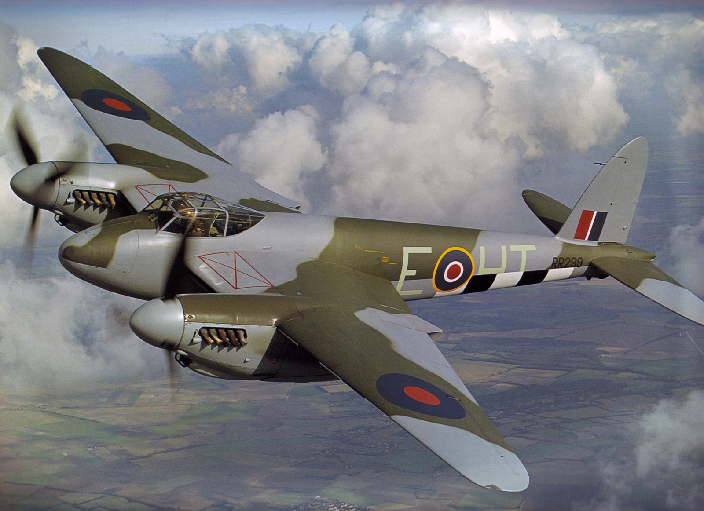
|
An example of engineering ingenuity inspired by the challenges of war, the De Havilland Mosquito's all-wooden design was a major advantage during a time of acute shortages of light metal alloys. Most of the aircraft was made of plywood. The fuselage was a frameless shell made of balsa wood sandwiched between sheets of birch. |
|
The sleek, Merlin-powered design, together with lightness and lack of any defensive armament or armour, allowed the Mosquito to travel at speeds in excess of 400 miles per hour to escape from enemy fighters. During much of the war the Mosquito was the fastest aircraft in the sky on either side.
The Mosquito could deliver the same bomb-load to distant targets as the heavily armoured, four-engined B-17 flown by the American Air Force.
The Mosquito ended the war with the lowest loss rate of any aircraft in RAF Bomber Command service.
PATHFINDER MOSQUITOES Mosquitoes played a major role with the Pathfinders, the Bomber Command group that used flares to mark the targets for the main force aircraft. They were fitted with the latest top secret electronic navigational aids for night and overcast conditions. Often Mosquito crews flew to the targets at low altitude, visually identifying and then marking them. This was much safer to do with a fast Mosquito than with a heavy bomber. |
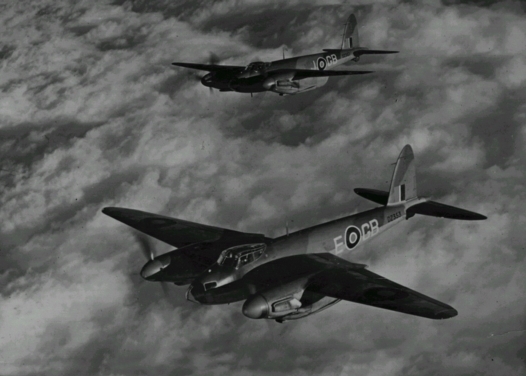
|
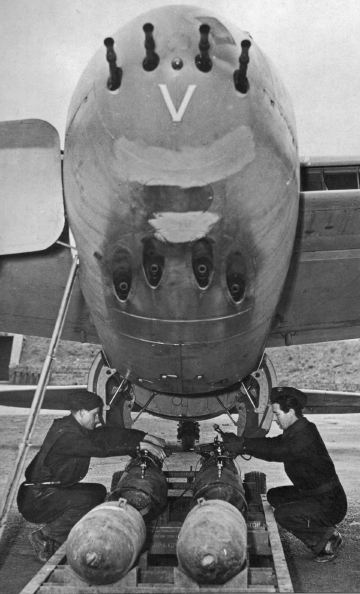
|
Although designed as a bomber, the Mosquito also served as a fighter. As well as defending Britain against enemy aircraft, Mosquito fighter squadrons conducted sweeps against the Nazi's night-fighters that were attacking Bomber Command's aircraft. The fighter version of the Mosquito was armed with four 20 mm cannons in its belly and four .303 machine guns in its nose. Night-fighter Mosquitos downed over 600 enemy aircraft during the war. |
Mosquitoes were renowned for being able to carry out pinpoint, roof-top height attacks. One example was the strike against the Gestapo headquarters in downtown Copenhagen. Another was breeching the wall of the Amiens prison to enable the escape of 250 prisoners, many of them French resistance fighters scheduled for execution. On 31 January 1943, Hermann Goering, head of the Luftwaffe, was due to address a parade in Berlin in the morning and a Mosquito attack effectively disrupted it. Not content with this, a second squadron went to Berlin in the afternoon and gave the parade being addressed by Dr. Goebels the same treatment. This action very effectively discredited Goering's boast that no enemy aircraft would fly unscathed over Berlin. |
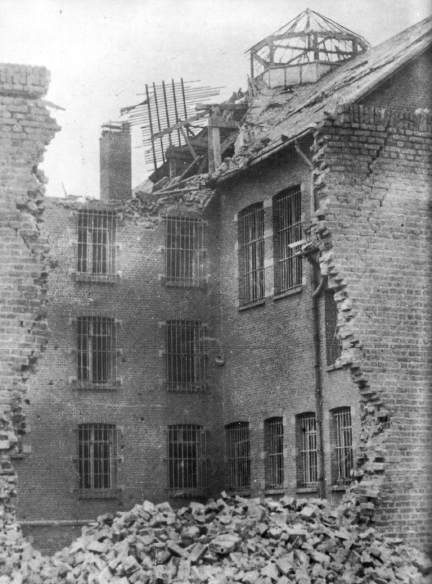
|
A total of 1134 Mosquitoes were built at Downsview, just north of Toronto, from 1942 to 1945. Canadian-built Mosquitoes were flown in combat in Europe and North Africa by the RCAF, Royal Air Force, and U.S. Army Air Force. Postwar, some Canadian-built Mosquitoes were flown by the Chinese Nationalist Air Force.
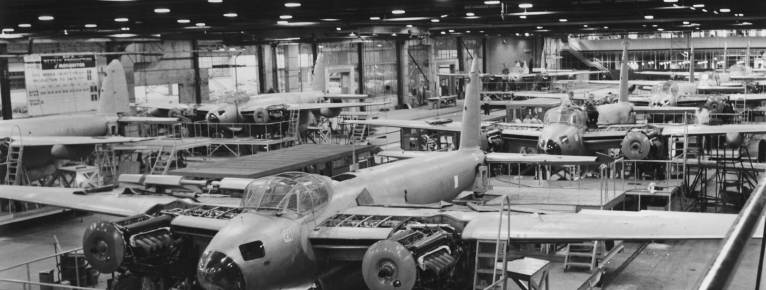

In 1954, ten Mosquitoes were acquired by Spartan Air Services of Ottawa for aerial survey work. Modifications included an extra fuel tank, a clear transparent nose, and three camera windows in the fuselage. As well as conducting photo surveys over Canada, the aircraft served in Central and South America and Africa. Some Spartan Mosquitoes remained in service until the early 1960's.
Mosquito RS700 was built in 1946 and converted to a PR.35 model. It is owned by the City of Calgary and under restoration by the Calgary Mosquito Society in association with the museum. Its Canadian history began when it was operated by Spartan Air Services in the 1950's to take photographs to map areas of Canada, including the Arctic. It also flew over areas of South America for the same purpose.
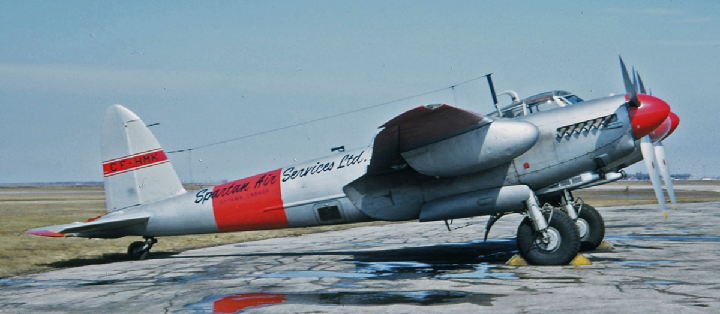
|
Crew: Weight (empty): Weight (max): Engines: Maximum speed: Range: Ceiling: Bomb Load: |
Pilot and Navigator/Bomb Aimer 14,300 lb (6490 kg) 25,000 lb (11,000 kg) Two Rolls Royce Merlins 415 mph (668 km/h) 1500 miles (2400 km) 37,000 ft (11,000 m) 4000 lb (1800 kg) |